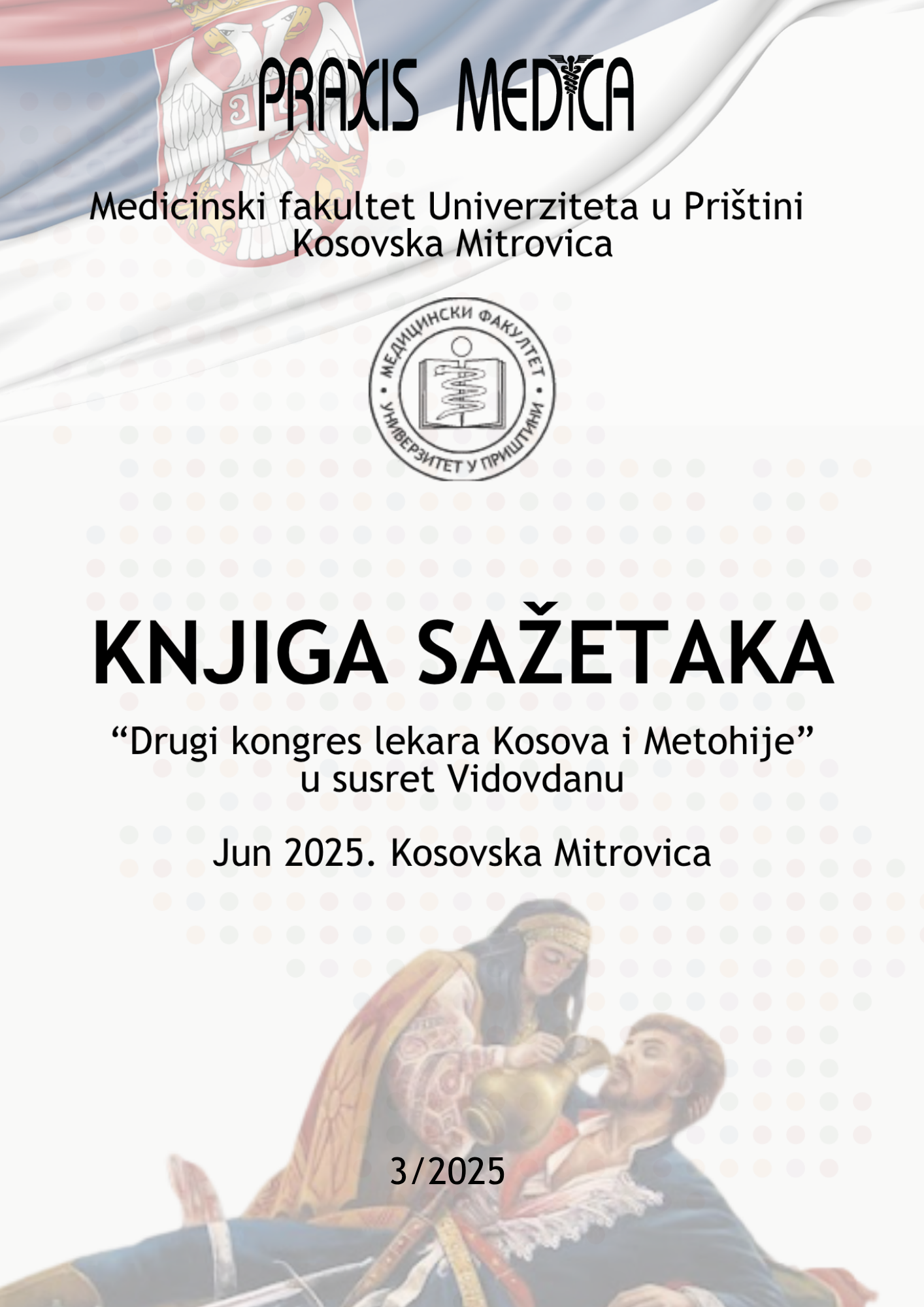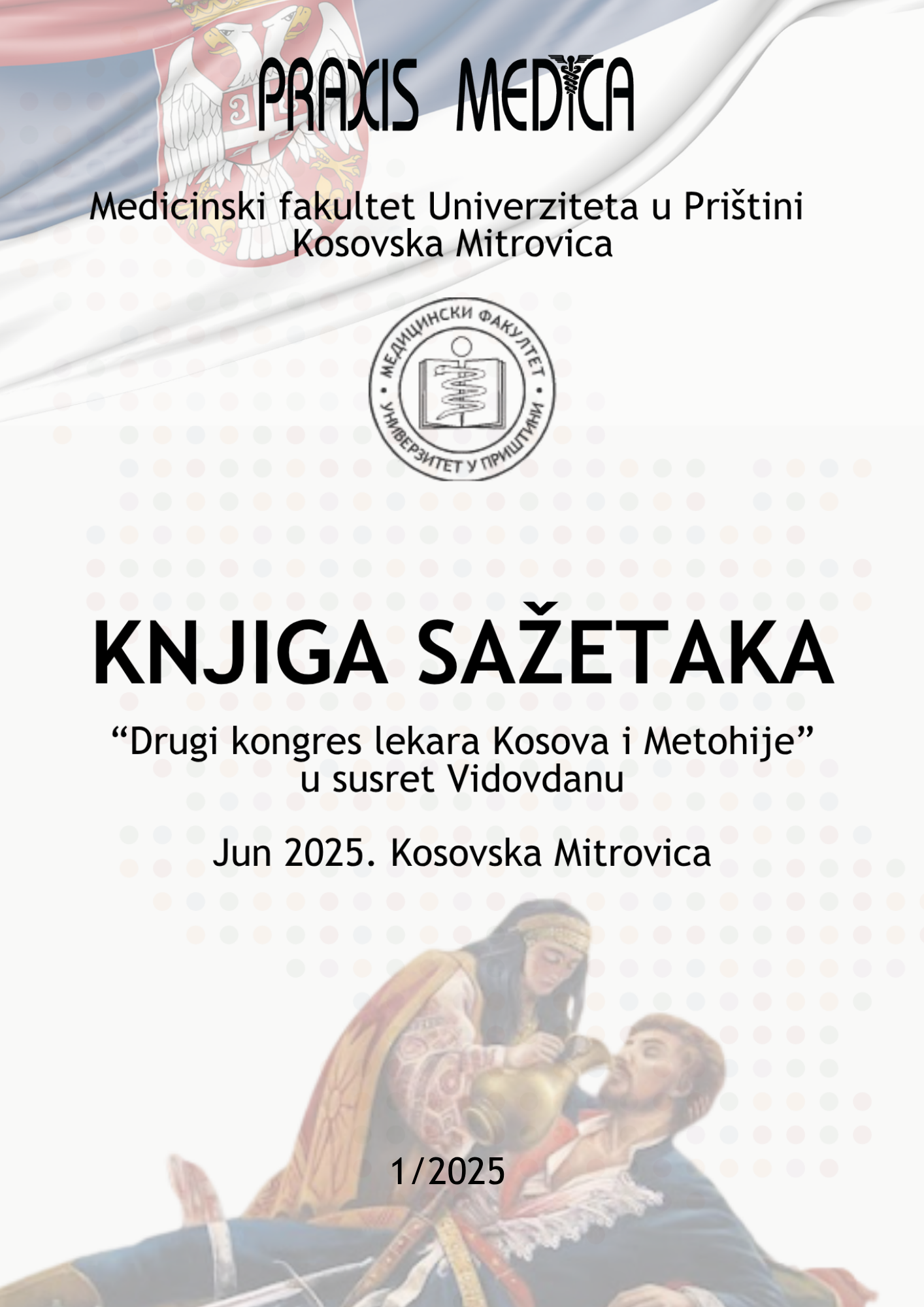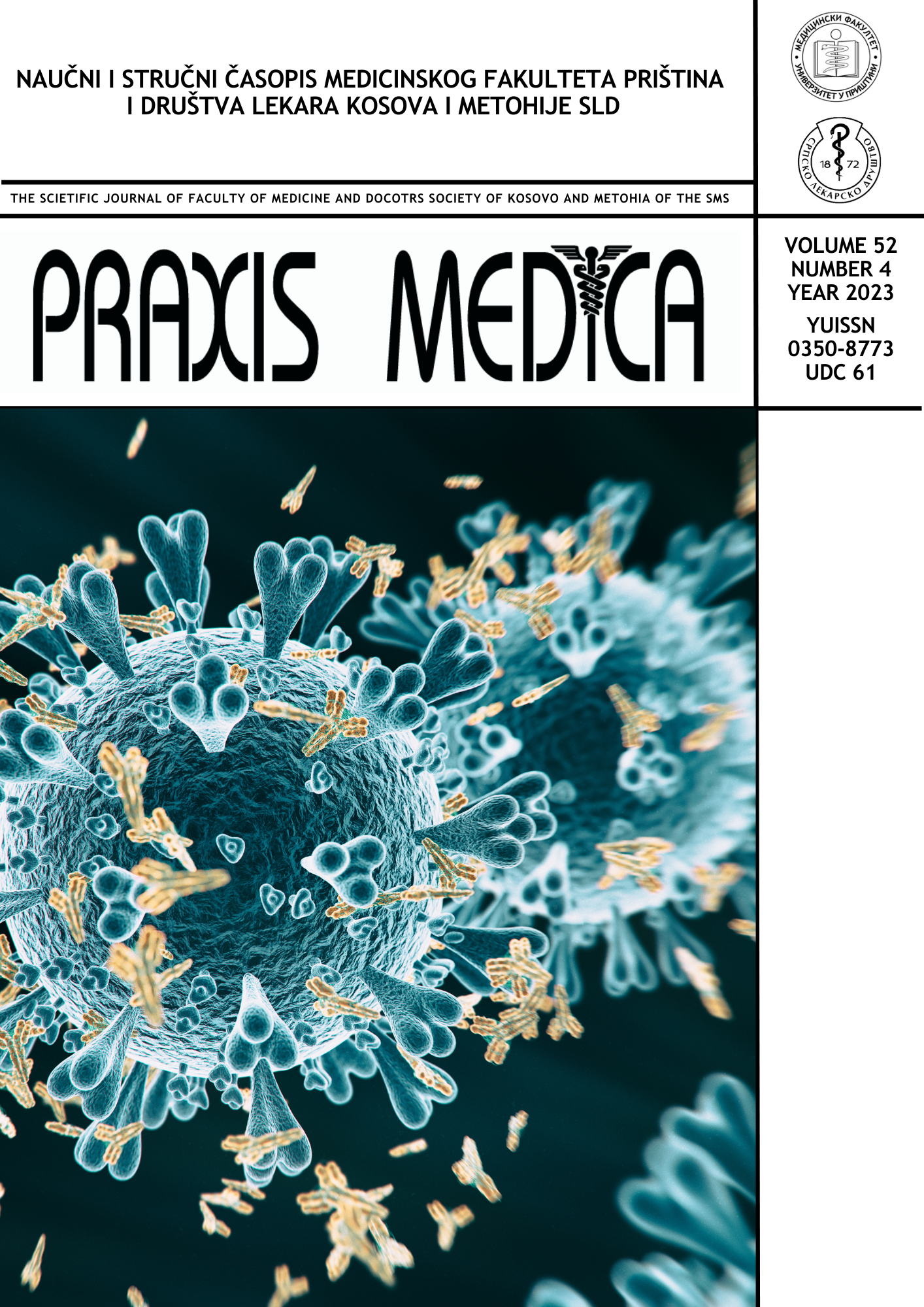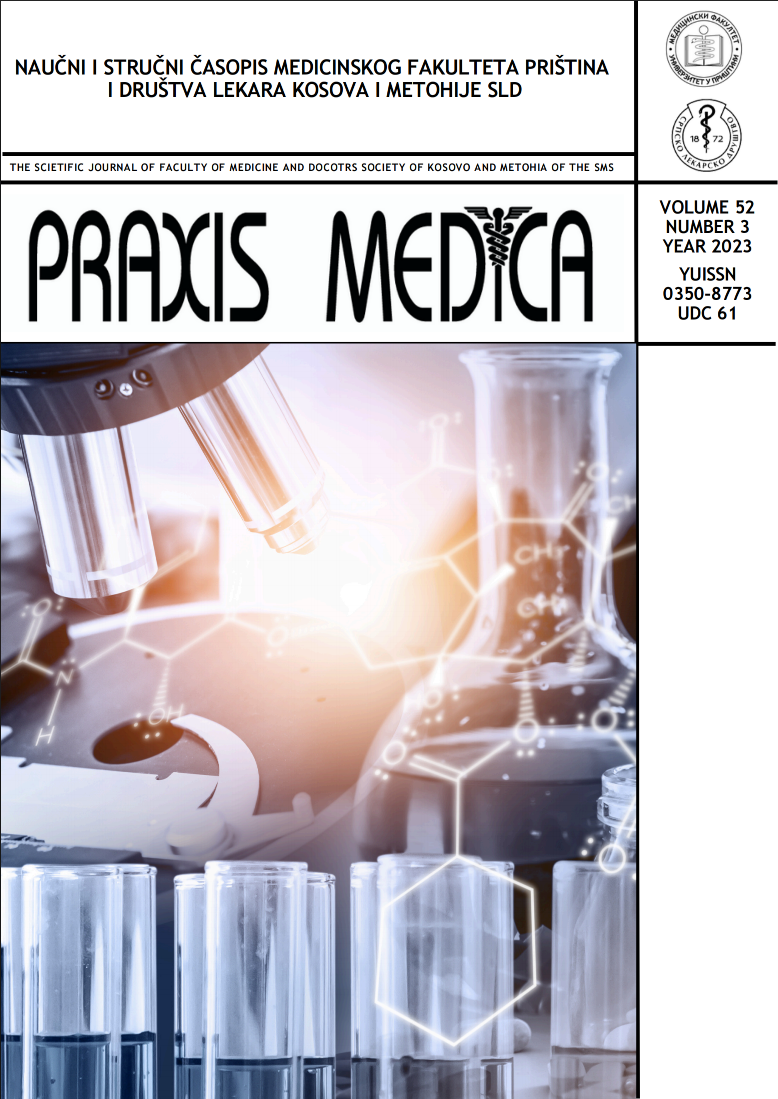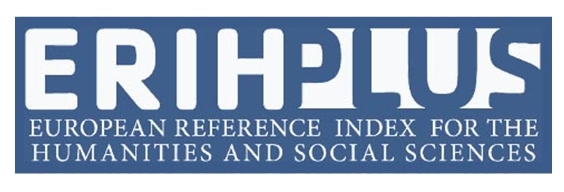Current issue
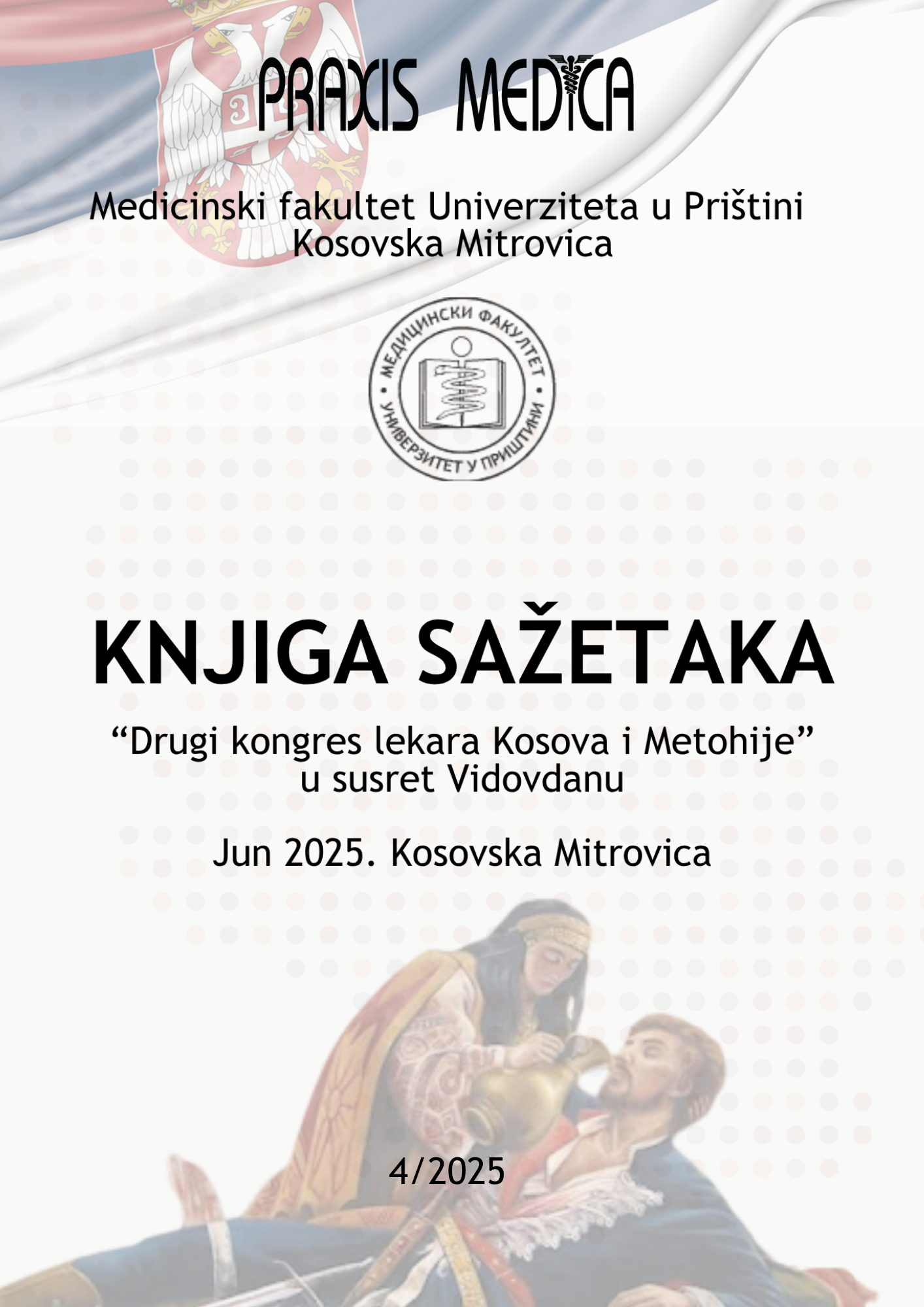
Volume 53, Issue 4, 2025
Online ISSN: 2560-3310
ISSN: 0350-8773
Volume 53 , Issue 4, (2025)
Published: 30.06.2025.
Open Access
All issues
Contents
30.06.2025.
Professional paper
UČENJE EMPATIJE U BALINT GRUPAMA
Uvod: Balint grupa se definiše kao mala grupa kliničara koji redovno analiziraju slučajeve iz svoje medicinske prakse kako bi stekli dublje
razumevanje odnosa lekar - pacijent.
SAŽETAK
Cilj ovog istraživanja je bio ispitavanje da li je učestvovanje u Balint grupama povezano sa većim stepenom empatije.
Metod: Ovo istraživanje je obuhvatilo 210 lekara iz primarne zdravstvene zaštite. Od 210 lekara, 70 je završilo Balint edukaciju u trajanju od
minimum godinu dana, dok 140 lekara nije pohađalo pomenutu edukaciju. Za svakog doktora sa završenom Balint edukacijom metodom slučajnog
izbora izabrana su po dva lekara koja nisu završila ovu edukaciju, a koja rade u istom domu zdravlja i imaju istu poziciju (lekar opšte medicine ili
specijalista). Za potrebe ovog istraživanja, konstruisan je opšti upitnik za ispitanike i korišćen je još jedan dodatni upitnik za ispitivanje empatije
Davisov „indeks interpersonalne reaktivnosti“ (IRI) . U statističkoj obradi podataka su korišćene metode deskriptivne statistike, Studentov t-test,
Pearson-ov hi-kvadrat test, Spearman-ov koeficijent korelacije i metode logističke i ordinalne regresije.
Rezultati: Preko tri četvrtine (82,9%) lekara u našem uzorku je bilo ženskog pola, dok je 17,1% ispitanika pripadao muškom polu. Srednja vrednost
godina starosti ispitanika je iznosila 48,3±9,6 i kretala se od 30 do 65 godina. Lekari koji su završili Balint edukaciju su imali značajno veće skorove na
subskalama Zauzimanje tuđeg stanovišta, Fantazija i Empatijska brižnost u odnosu na lekare koji je nisu završili, p<0,001. Što se tiče subskale Lična
nelagodnost, nije bilo statistički značajne razlike između lekara ove dve grupe, p=0,530. Prema našim rezultatima, utvrđena je povezanost između
subskala Zauzimanje tuđeg stanovišta, Fantazija i Empatijska brižnost (p<0,001), dok je subskala Lična nelagodnost korelirala samo sa subskalom
Fantazija (p=0,010). U multivarijantnom logističkom regresionom modelu za subskalu Zauzimanje tuđeg stanovišta jedini značajan prediktor je bila
Balint grupa. Rezultati su takođe pokazali da članovi Balint grupe imaju 2,8 puta veću šansu da imaju visoke skorove na ovoj subskali.
Multivarijantnom logističkom regresijom za subskalu Fantazija su se kao značajni prediktori izdvojili Balint grupa i lekari specijalisti. Naši rezultati su
dalje pokazali da su lekari sa Balint edukacijom imali 5, a lekari specijalisti 2,4 puta veću šansu da postignu visoke skorove na ovoj subskali. U
multivarijantnom logističkom regresionom modelu za subskalu Empatijska brižnost kao jedini prediktor se izdvojila Balint grupa (p<0,001), tačnije,
lekari sa Balint edukacijom su imali 6,7 puta veću šansu da postignu visoke skorove na subskali Empatijska brižnost. U univarijantnom logističkom
regresionom modelu za subskalu Lična nelagodnost statistička značajnost je bila postignuta samo za jednu varijablu-specijalizaciju (p=0,021).
Preciznije, lekari bez specijalizacije su imali veću „Ličnu nelagodnost“ u odnosu na specijaliste. Spearman-ova korelacija za subskalu Zauzimanje
tuđeg stanovišta je pokazala da postoji statistički značajna osrednja pozitivna povezanost između dužine Balint edukacije (broja godina) i skora na
subskali Zauzimanje tuđeg stanovišta (rs=0,331; p=0,005).
Zaključak: Naše istraživanje je pokazalo da su Balint grupe efikasne za učenje empatije među lekarima. Štaviše, naši rezultati snažno podržavaju
integraciju Balint grupa u medicinsko obrazovanje.
Ključne reči: Odnos lekar-pacijent, Balint grupe, primarna zdravstvena zaštita, empatija.
Mirjana Stojanović Tasić, Emilija Novaković, Kristina Rakić
30.06.2025.
Professional paper
PRIMENA TEČNOSTI KOD KRITIČNO OBOLELIH PACIJENATA SA SEPSOM I SEPTIČKIM ŠOKOM
UVOD Sepsa se definiše kao životno ugrožavajuća disfunkcija organa čiji je uzrok disregulatorni odgovor domaćina na infekciju. Septički šok treba
razmatrati kao podgrupu sepse sa pratećim cirkulatornim, ćelijskim i metaboličkim poremećajima koji doprinose povećanoj smrtnosti više nego sama
sepsa. U tretmanu sepse jedna od najbitnijih terapijskih mera je davanje tečnosti. Sepsu prati teška vazoplegija, koja je povezana sa oštećenjem
glikokaliksa i koja može dovesti do razvoja distributivnog šoka. Efikasna podrška hemodinaskoj funkciji je bitna za preživljavanje pacijenata sa
sepsom i septičkim šokom. U prošlosti, idealni tretman za pacijente sa sepsom zasnivao se na masivnoj nadoknadi volumena tečnosti. Međutim, u
novije vreme ovaj koncept je ozbiljno doveden u pitanje.
GLAVNI DEO Primena tečnosti fiziološki treba da dovede do povećana venskog priliva u srce, i kao odgovor, do povećanja minutnog volumena srca.
Međutim, uočeno je da se korisni efekat nadoknade volumena ne dešava kod mnogih pacijenata. Odgovor na primenu tečnosti je prisutan kod samo
polovine pacijenata.
Vrste tečnosti - Dve glavne vrste tečnosti za nadoknadu volumena su izotonični kristaloidi i koloidi.
Kristaloidi se dele u dve grupe - rastvori bogati hloridima (tzv. fiziološki rastvor - Nacl 0,9%) i balansirani kristaloidi. Prema pretodnim Smernicama za
lečenje sepse 2021. oni se smatraju tečnostima izbora za lečenje pacijenata sa sepsom i septičkim šokom. Primena balansiranih kristaloida kod
pacijenata sa sepsom ima prednosti iz dva razloga: prvi, oni imaju elektrolitni sastav koji je približan sastavu plazme i drugi, primena rastvora
bogatih hloridima je udružena za velikim rizikom za razvoj hiperhloremijske acidize, naročito ako se primeni u velikom volumenu.
U prošlosti, tečnost izbora su bili koloidi (HES, želatini, dextrani), kao molekuli velike težine, za koje se verovalo da smanjuju ektravaskularn gubitak
(“curenje”) tečnosti i dugotrajno povećavaju intravaskularni volumen. Međutim, nema dokaza koji pokazuju superiornost primene rastvora koloida
prema kristaloidima. Uprkos teoretskoj prednosti albumina prema kristaloidima u održavanju onkotskog pritiska, brojne studije su pokazale da
albumin ne povećava preživljavanje pacijenata.
Količina tečnosti - Prema aktuelnim vodičima sugeriše se primena najmanje 30 ml/kg kristaloida intravenski u prva 3 sata. Navedeni volume tečnosti
je krajnje diskutabilan poslednjih godina, gde je zajednički zaključak da treba primeniti individualni pristup prema toleranciji i odgovoru na bolus
tečnosti.
ZAKLJUČAK Primena tečnosti je jedna od najbitnijih terapijskih mera u tretnmanu sepse i septičkog šoka. Balansirani kristaloidi su tečnost izbora.
Preporučuje se individualni pristup koji se bazira na toleranciji tečnosti i odgovoru na bolus tečnosti. Preporučuje se pristup zasnovan na primeni
malih i ponavljajućih bolusa tečnosti (250-500 ml) kristaloida uz hemodinamski monitoring pacijenata.
Dragan Đorđević
30.06.2025.
Professional paper
KOMPLEKSNA PENETRANTNA OŠTEĆENJA UNUTRAŠNJIH ORGANA KOD DECE: HIRURŠKE I SISTEMSKE IMPLIKACIJE
Uvod: Prostreli abdomena predstavljaju ozbiljan oblik penetrantne traume koji često dovodi do višestrukih povreda vitalnih struktura unutar trbušne
šupljine. Zbrinjavanje ovakvih pacijenata zahteva multidisciplinarni pristup, brzu stabilizaciju hemodinamskih parametara i hitnu hiruršku
intervenciju. Ishod zavisi od broja i težine povreda, vremena proteklog do operacije, kao i efikasnosti postoperativne nege.
Prikaz slučaja: Prvi pacijent, muškarac star 36 godina, primljen je nakon prostrelne povrede trbuha zadobijene vatrenim oružjem iz neposredne
blizine. Pri prijemu bio je konfuzan, tahikardan (HR 132/min), hipotenzivan (TA 80/60 mmHg), sa rigidnim abdomenom i izraženim znakovima
akutnog abdomena. Urađena je brza reanimacija uz nadoknadu tečnosti i krvi, nakon čega je sprovedena hitna medijalna laparotomija.
Intraoperativno su pronađene višestruke perforacije jejunuma, aktivno krvarenje iz mezenterijalnih sudova i hematoperitoneum sa više od 1500 ml
krvi. Izvršena je resekcija segmenta tankog creva u dužini od 80 cm sa termino-terminalnom anastomozom, hemostaza i ispiranje peritonealne
šupljine. Pacijent je postoperativno zbrinut u jedinici intenzivne nege, a oporavak je protekao bez znakova peritonitisa ili fistulacije. Drugi pacijent,
muškarac star 29 godina, takođe je ranjen vatrenim oružjem, ali u stabilnijem opštem stanju. Po prijemu je bio afebrilan, orijentisan, sa bolom
lokalizovanim u desnom kvadrantu abdomena. Laboratorijski su dominirale blaga leukocitoza i povišeni CRP. Ultrazvuk i CT abdomena ukazali su na
prisustvo slobodne tečnosti u abdomenu i vazdušnih mehurića u blizini hepatične fleksure. Indikovana je eksplorativna laparotomija tokom koje je
ustanovljena linearna povreda kapsule desnog jetrenog režnja i jedinstvena perforacija transverzalnog kolona. Izvršena je primarna sutura creva,
hemostaza jetre i postavljanje drenova. Pacijent je lečen antibiotski i parenteralno, sa urednim postoperativnim tokom i otpušten je iz bolnice
devetog dana.
Zaključak: Oba prikazana slučaja potvrđuju značaj individualnog pristupa u zbrinjavanju prostrelnog oštećenja trbušnih organa. Rano prepoznavanje
stepena povrede, adekvatna preoperativna priprema i blagovremena laparotomija doprinose smanjenju smrtnosti i komplikacija. Uvođenje protokola
za upravljanje traumom i dostupnost obučenog hirurškog tima od suštinskog su značaja za ishod lečenja ovih pacijenata.
Ključne reči: penetrantna trauma, resekcija creva, povreda jetre, laparotomija
Zlatan Elek, Mladen Kasalović, Gojko Igrutinović
30.06.2025.
Professional paper
RAZVOJNI POREMEĆAJ KUKA – PREVENCIJA I LEČENJE
Razvojni poremećaj kukova (RKP) je termin koji je devedesetih godina prošlog veka zamenio dotadašnji naziv urođeno iščašenje kukova, i kojim se
oznalava najčešći poremećaj koštano-zglobnog sistema kod dece.
Etiologija RPK je i dalje nejasna, i najverovatnije multifaktorska, kombinovanim dejstvom genetskih, mehaničkih i hormonskih faktor. Ovi faktori
mogu delovati prenatalno, peripartalno i postnatalno. Postoje velike rasne, etničke i regionalne varijacije u učestalosti uz značajnu predominaciju
ženskog pola, što otežava primarnu prevenciju, usmerenu na sprečavanje nastanka oboljenja. Najvažniji faktor za pravilni razvoj zgloba kuka je
sloboda pokreta, pa mere obezbeđenja pune slobode pokreta kukova, predstavlja primarnu prevencije RPK. Otkrivanje stanja koja su mogla da
umanje slobodu pokreta kukova i rano otkrivanje i lečenje RPK predstavljaju mere sekundarne i tercijarne preprevencije. Klinički skrining je prva i
obavezna mera rane detekcijie RPK. Ultrazvučni skrining, najčešće Grafovim postupkom, je najznačajniji za pravovremenu dijagnostriku RPK. Od
prvorazrednog značaja je edukacija za pravilno i prvovremeno sprovođenje UZ skrininga i pravovremeno započinjanja terapije, što omogućava
izlečenje – reverziju razvoja zgloba kuka ka normalnom u 96-98% pacijenata. Inicijalno lečenje se sprovodi neoperativno, najčešče Pavlikovim
remenčićima, a ponekad i rigidnim abdukcionom ortozama,. Perkurtana trakcija je ponekad neophodna, a nakon nje se često sprovodi repozicija u
anesteziji sa plasiranjem koksofemoralnog gipsa u “humanom položaju”. Ukoliko je “zona sigurnosti” repozicija mala, potrbno je uraditi i neotomiju
adduktora.
Rana hirurška repozicija, je ponovo napuštena zbog visokog procenta komplikacij.
Kod kasno dijagnostikovanih slučajeva ili neuspeha ortopedskog lečenja, hiruška repozicija kuka se izvodi optimalno u uzrastu od 24-30 meseci.
Sastavni deo ove procedure je derotativno-abrevaciona osteotomiju femurai acetabuloplastika, koja se izvodi Salterovom ili San Dijegom
osteotomijom. U adolescentnom uzrastu mogu se primeniti i duple, triple i periacetabularne osteotomije karlice kao i Kijarijeva operacija. Kod
najtežih slučajeva se u poslednje vreme savetuje i rana ugradnja andoproteze.
Cilj neoperativnog lečenja je razvoj normalnog kuka, a operativnog lečenja odlaganje pojave osteoratritisa za što kasnije životno doba.
Ključne reči: Razvojni poremečaj kukova, ultrazvuk kukova, Pavlikovi remeni, Salterova osteotomiju.
Dragoljub Živanović
30.06.2025.
Professional paper
HIRURGIJA ŠTITASTE ŽLEZDE U XXI VEKU
Posle prve četvrtine XXI veka koja je već za nama možemo reći da hirurgija uopšte a i hirurgija štitaste žlezde nije ni nalik na ono što je predstavljala
ne samo tokom već i krajem XX veka. Savremena hirurgija štitaste žlezde podrazumeva napredak u svim oblastima koje je prate a ne samo u hirurgiji.
Nema savremene hirurgije bez savremene anesteziologije koja nam omogućava bezbednu operaciju i kod pacijenata sa ozbiljnim komorbiditetima ali
i operacije u regionalnoj anesteziji.
SAŽETAK
Nema savremene hirurgije bez savremen endokrinologije koja nam omogućava pravovremenu i preoperativnu dijagnostiku, genetski skrining,
savremene metode sistemske terapije.
Nema savremene hirurgije bez savremene radiologije i nuklearne medicine, koje nam omogućavaju invazivne dijagnostičke, ali i terapijske
procedure.
Nema savremene hirurgije bez savremene patologije uz primenu savremene klasifikacije bolesti, imunohistohemijskih analiza i primene različitih
markera.
Upotrebe različitih sistema za hemostazu, intraoperativnu vizualizaciju paratiroidnih žlezdi, intraoperativnog monitoringa.
I na kraju nema savremene hirurgije štitaste žlezde bez savremenih visoko specijalizovanih endokrinih hirurga koji će sve gore pomenuto sprovoditi u
praksi
Vladan Živaljević
30.06.2025.
Professional paper
RAZVOJ I ZNAČAJ PLASTIČNE HIRURGIJE U SRBIJI
Plastična hirurgija ima svoje korene još u starom veku, ali je rodonačelnik moderne plastične hirurgije engleski hirurg Harold Gilis, koji je ovu
hiruršku granu popularizovao u prvoj polovini 20. veka. U Srbiji se plastična hirurgija kao grana formira neposredno nakon Drugog svetskog rata. U
našu zemlju doneo ju je upravo dr Gilis sa svojim timom, i to na Vojnomedicinsku akademiju, gde je prvo formirano Odeljenje, a potom i Klinika za
plastičnu hirurgiju, čiji je prvi načelnik bio pukovnik dr Vinko Arneri. Taj prvi pik u razvoju plastične hirurgije doneo je veliki broj novina i
mogućnosti u lečenju širokog spektra patologije: urođenih anomalija, posttraumatskih i postekscizionih defekata kože i mekih tkiva, hroničnih rana,
opekotina i postopekotinskih sekvela, oboljenja i traume šake. Iz Vojnomedicinske akademije potekli su brojni hirurzi koji su ovu granu širili po celoj
bivšoj Jugoslaviji, ali i svetu.
Raspad Jugoslavije nametnuo je nove izazove i pred plastičnu hirurgiju, koja je uspešno odgovorila svim zahtevima koji su pred njene nosioce
postavljeni. Razvoj mikrohirurgije, doneo je nove mogućnosti, a hirurzi plastičari sa Vojnomedicinske akademije bili su među prvima u svetu koji su
ratnu ranu rekonstruisali uz pomoć mikrohirurškog režnja. Ogromno iskustvo iz rekonstruktivne mikrohirurgije stečeno tokom rata, uspešno su uveli u
svakodnevnu kliničku praksu. Uporedo sa razvojem rekonstruktivne hirurgije, prateći svetske trendove, kao njen poseban deo, razvija se i estetska
hirurgija. Tehnološki napredak, uz usvajanje novih hirurških tehnika, omogućio je da se veliki broj hirurških zahvata iz oblasti rekonstruktivne, ali
prvenstveno estetske hirurgije, izvodi u uslovima jednodnevne hirurgije, čije se prednosti ogledaju u više aspekata.
Najnoviji trendovi popularizovali su anti-aging i regenerativnu medicinu, koju je nemoguće odvojiti od plastične hirurgije.
Marijan Novaković, Živan Nikolić
30.06.2025.
Professional paper
UTICAJ PSIHOAKTIVNIH SUPSTANCI NA FUNKCIJU BUBREGA
Droga se dugo koristila u rekreativne svrhe. Još su Arapski trgovci u 3. veku pre n.e. pušili opijum a Asteci su na sličan način uživali efekat halucinogenih pečuraka.
Zloupotreba psihoaktivnih supstanci u svetu je u stalnom porastu a više od 40% mladih, u jednom trenutku je konzumiralo nedozvoljene droge.
Bubrežne komplikacije, kao posledica zloupotrebe droga obuhvataju širok spektar glomerulskih, intersticijalnih i vaskularnih poremećaja. Iako neke psihoaktivne supstance
deluju direktno nefrotoksično, postoje i drugi mehanizmi koji potenciraju njihovu nefrotoksičnost. Ovi efekti često su hronični i nepovratni ali i akutni sa mogućim oporavkom
bubrežnih funkcija.
Heroin ima više nefrotoksičnih komplikacija a jedna od najozbiljnijih je koma uslovljena predoziranjem, koja dovodi do pritiskom indukovanog oštećenja mišića i do
rabdomiolize, sa konsekventnom hipotenzijom, hipoksijom, acidozom i dehidratacijom. Heroinom indukovana nefropatija se klinički manifestuje nefrotskim sindromom koji
može da progredira do terminalne faze bubrežne slabosti. Biopsija bubrega u ovakvim slučajevima pokazuje fokalno segmentnu glomerulosklerozu.
I morfijum može imati direktan efekat na glomerule, izazivajući proliferaciju fibroblasta, smanjujući degradaciju IV tipa kolagena.
Kokain je alkaloid koji se apsorbuje kroz bilo koju sluzokožu, poluživot mu je 30-90 min, metaboliše se 80-90% a ostatak se izlučuje nepromenjen mokraćom, gde se njen
metabolit može detektovati za 36-48 sati. Akutno bubrežno oštećenje nastaje nakon upotrebe kokaina i to kao posledica rabdomiolize. Mišićna ishemija je uzrokovana
produženom vazokonstrikcijom mišićnih arterija. Kokain može izazvati mezangijalnu proliferaciju koja uslovljava fokalno-segmentnu glomerulosklerozu.
Ekstazi se brzo apsorbuje, dostiže svoj pik za oko 2 sata, metaboliše se u jetri a izlučuje preko bubrega. Neželjeni efekti su gubitak apetita, mučnina, povraćanje, glavobolja,
trizmus, grčevi ili ozbiljne konvulzije, hiperpireksija, disfunkcija jetre, rabdomioliza, intravaskularna koagulacija i akutna bubrežna insuficijencija.
Benzodiazepin je oko 70% intravenskih zavisnika koristilo u nekom trenutku svog života. Akutna bubrežna insuficijencija najčešće nastaje nakon nesmotrene intraarterijske
aplikacije ovog leka koji izaziva ishemiju ekstremiteta, kao rezultat embolizacije i posledičnu rabdomiolizu i mioglobinuriju.
Neke pečurke mogu izazvati halucinogene efekte nakon ingestije. Nefrotoksična supstanca Orelanin, kao njihov sastavni deo, može zamaskirati nefrotoksični uticaj pa se
oligurija razvija tek nakon 5-12 dana od njihove upotrebe. Kod nekih pacijenata bubrežna insuficijencija može biti tranzitna a u nekim stanjima može biti ireverzibilna.
Postoje dokazi da pušenje, kod dijabetičara i hipertenzivaca, ubrzava progresiju bubrežne insuficijencije povećavajući glomerulsku hiperfiltraciju koja se smatra prvom fazom
u razvoju dijabetesne nefropatije.
Namerno udisanje rastvarača ispoljava nefrotoksični efekat uticajem na tubulointersticijsku povratnu spregu. Konsekutivna tubulska acidoza mobiliše kalcijum iz kostiju,
hiperkalciuriju i posledičnu kalkulozu urinarnih puteva.
Alkohol uslovljava glomerulopatiju koja je histološki identična sa IgA nefropatijom a manifestuje se mikrohematurijom.
Zloupotreba psihoaktivnih supstanci predstavlja veliki zdravstveni problem, zbog toga bi podizanje svesti o njihovim potencijalnim neželjenim efektima moglo biti od koristi
kod osoba koje ove supstance koriste po prvi put. Osim zdravstvenih, zloupotreba psihoaktivnih supstanci može povećati i ekonomski teret na fondove zdravstvene zaštite, što
implicira neophodnost da korisnici psihoaktivnih supstanci imaju potrebu za intenzivnim programima monitoringa i tretmana.
Ključne reči: zloupotreba, psihoaktivne supstance, bolest bubrega, nefrotoksičnost, komplikacije
Radojica Stolić
30.06.2025.
Professional paper
LEČENJE INVAZIVNIH GLJIVIČNIH INFEKCIJA- NAŠE ISKUSTVO
Uvod:Invazivne gljivične infekcije (IGI) su značajan uzrok morbiditeta i mortaliteta kod pacijenata u jedinicama intenzivne lečenja (JIL) i nakon
transplantacije solidnih organa i hematopoetskih matičnih ćelija (TMHĆ). Dijagnoza IGI pre smrti uspešno se postavlja kod samo 12% pacijenata. Broj
pacijenata sa invazivnom aspergilozom (IA) je u porastu, posebno u JIL, i ona je vodeći uzrok smrti među IGI. Druga IGI koja je u porastu u našoj
zemlji je invazivna mukormikoza i praćena je visokim mortalitetom.Cilj: Cilj rada je da se prikažu kliničke karakteristike, primenjena terapija i
komorbiditeti kod ne-neutropeničnih pacijenata sa IA i IM.Metode: Ukupno 57 ne neutropeničnih pacijenata sa invazivnom aspergilozom, prosečne
starosti 56 godina (26 žena, 31 muškarac) lečeno je u Klinici u periodu od 2008. do 2022. godine. Dijagnoza IA postavljena je na osnovu radioloških
procedura, biološkog materijala, seroloških testova i histopatoloških nalaza. U istom periodu kod 2 muškarca i 1 žene,prosečne starosti 59 godina,
histopatološki je dijagnostikovana invazivna mukormikoza u plućima, rinoorbitalnom području i mozgu.Rezultati: Plućna IA je pronađena kod 46
(80,7%), rino-orbitalna cerebralna IA kod 4 (7,0%), IA paranazalnih sinusa kod 5 (8,7%) i IA kože kod 2 (3,51%) pacijenata. Kod ovih pacijenata
pronađene su različite komorbiditete (tumori, bronhiektazije, IgA imunodeficijencija, terapija kortikosteroidima, dijabetes melitus i druge). Lečenje
je sprovedeno itrakonazolom, vorikonazolom ili ehinokandinima, a 31 (54,4%) pacijent je imao hirurške zahvate. Do početka 2023. godine, 18
(31,58%) pacijenata je umrlo.Od bolesnika sa IM , jedan je imao zahvaćena pluća i faktor rizika diseminovan karcinom prostate.Druga dva su imali
rinoorbitalnu i
rinoorbitocerebralnu formu bolesti kao posledicu neregulisanog dijabetesa.Primenjena je sistemska terapija lipozomalnim
amfotericinom B uz hirurški tretman kod 2 bolesnika, koja su i preživela. Zaključak: Dijagnoza i terapija IA kod ne-neutropeničnih bolesnika, moraju
biti praćene testovima na malignitet i/ili imunodeficijenciju. Moguće je povećati stopu preživljavanja kod ovih pacijenata redovnim kliničkim,
mikrobiološkim i morfološkim praćenjem.Kod IM neophodno je uz sistemsku antigljivičnu terapiju primeniti hirurški tretman zahvaćenog organa.
Vesna Begović Kuprešanin
30.06.2025.
Professional paper
LAJMSKA BOLEST – AKTUELNA SAZNANJA I DIJAGNOSTIČKE DILEME
Uvod: Lajmska bolest ili lajmska borelioza (LB) je multisistemska bakterijska infekcija (zoonoza) koju izaziva Borrelia burgdorferi (Bb) i prenosi se
ubodom zaraženog krpelja genus Ixodes. LB se naziva “velikim imitatorom”, jer njeni simptomi podsećaju na simptome oko 350 različitih oboljenja,
te je samim tim dijagnoza i diferencijalna dijagnoza kompleksna.
Diskusija: LB karakterišu tri stadijuma: 1. rana lokalizovana bolest, 2. rana diseminovana bolest, i 3. kasna diseminovana bolest (pozna-hronična
infekcija). U prvom stadijumu javlja se karakteristična promena na koži, Erythema migrans (EM), koja predstavlja jedini tipičan klinički nalaz u toku
LB. U prvom stadijumu mogu biti prisutne i konstitucionalne tegobe kao što su malaksalost, povišena temperatura, glavobolja, ukočenost vrata i
uvećanje regionalnih limfnih žlezda. Drugi stadijum lajmske bolesti se karakteriše neurološkim (serozni meningitis, pareza n. facialisa, radikulitis),
reumatološkim (akutni artritis), kardiološkim (poremećaji srčanog ritma, mioperikarditis) i dermatološkim (benigni limfocitom) manifestacijama. U
trećem stadijumu se javljaju hronični artritis, neuritis, encefalopatija, encefalomijelitis i karakteristična kožna promena (Acrodermatitis chronica
atrophicans – ACA). Lajmska neuroborelioza predstavlja kliničke manifestacije LB koje zahvataju centralni i periferni nervni sistem i odlikuje se
potencijalno najtežim formama oboljenja. Dijagnostika LB se zasniva na kompletnoj dijagnostičkoj obradi, uključujući anamnezu sa kompatibilnim
kliničkim simptomima i znacima, sa akcentom na epidemiološke podatke o mogućem ubodu krpelja. Mikrobiološke analize su neophodne za
definitivno postavljanje dijgnoze, ali ne treba zanemariti činjenicu da se kod LB imunološki odgovor održava tokom dužeg vremenskog perioda, te
postavljanje dijagnoze hronične infekcije ne bi trebalo da se zasniva samo na prisustvu pozitivnih antitela. Neophodno je prilikom interpretacije
mikrobioloških analiza uključiti i seroprevalencu u određenom regionu, jer se pozitivna antitela mogu ustanoviti kod 5-25% zdravih osoba. Lečenje LB
je efikasno u ranoj lokalizovanoj fazi, antibiotska terapija u trajanju 10-15 dana dovodi do izlečenja u 84% do 95% slučajeva. Shodno tome, za većinu
pacijenata, ako se pravilno dijagnostikuje i prevovremeno leči, LB nije teška bolest. Smatra se da se kod 10% lečenih pacijenata javlja Post lajm
sindrom (Post Tretment Lyme Disease Syndrome-PTLDS), koji ne reaguje na produženu antimikrobnu terapiju. Istraživanja ukazuju na mogući
postinfektivni inflamatorni proces, a oko 40% pacijenata sa PTLDS ima terapijski odgovor na primenu placeba. Hronična lajmska bolest predstavlja
poseban entitet koji ne treba izjednačavati sa hroničnom infekcijom B. burgdorferi, jer primena produženih, opasnih i skupih antibiotskih tretmana
za nju nije opravdana. S druge strane, ne sme se zanemariti činjenica da je kod hronične infekcije često neophodno dugotrajno lečenje, jer se radi o
oboljenju koje znatno narušava kvalitet života.
Zaključak: Većina kliničkih znakova i simptoma LB osim EM nije patognomonična za ovo oboljenje, što obavezuje na kompletno sagledavanje
problema diferencijalne dijagnoze ovog entiteta. Neophodno je naglasiti da je kod sumnje na hroničnu infekciju neophodan multidisciplinarni pristup
da bi se uspostavila validna dijagnoza.
Ključne reči: lajmska borelioza, hronična infekcija, mikrobiološke analize
Jasmina Poluga, Jovan Malinić, Nataša Katanić
30.06.2025.
Professional paper
SAVREMENI PRISTUP U LEČENJU CISTIČNE FIBROZE
Cistična fibroza (CF) je autosomno recesivna nasledna bolest koja pogađa više organskih sistema, uključujući respiratorni i gastrointestinalni trakt.
Nastaje kao posledica mutacija CFTR gena koji kodira transmembranski regulator provodljivosti hloridnih jona. Klinička slika obuhvata hronične
plućne bolesti, egzokrinu insuficijenciju pankreasa, malapsorpciju, CF dijabetes, hepatobilijarne poremećaje i visoke koncentracije elektrolita u
znoju. Dijagnoza se postavlja na osnovu znojnog testa i/ili genetske analize, dok je uvođenjem neonatalnog skrininga omogućeno ranije otkrivanje i
započinjanje terapije.
Lečenje CF zahteva multidisciplinarni pristup i obuhvata fizioterapiju, inhalacione lekove, antibiotike, nutritivnu podršku i vitaminske suplemente. U
poslednjoj deceniji postignut je značajan napredak uvođenjem CFTR modulatora – kombinacija korektora i potencijatora, koji omogućavaju ciljani
tretman kod pacijenata sa specifičnim mutacijama.
Cilj rada: Procena efekata savremene modulatorne terapije kod pacijenata sa cističnom fibrozom u Crnoj Gori.
Materijal i metode: U istraživanje su uključeni svi pacijenti iz Crne Gore registrovani u Evropskom registru za CF. Analizirani su demografski podaci,
genotip, znojni test, nutritivni status, plućna funkcija (FEV1), mikrobiološki nalazi, primenjena terapija i komplikacije bolesti. Istraživanje je
sprovedeno uz saglasnost Etičke komisije KCCG i informisani pristanak pacijenata ili njihovih staratelja.
Rezultati: U Crnoj Gori je kod 42 pacijenta (incidenca 1:4500) dijagnostikovana CF, od kojih je 30,9% odraslih. Najveća učestalost registrovana je u
severnom regionu (9,9/100.000). Genetskom analizom identifikovano je 7 mutacija, pri čemu je najčešća F508del (77,38%).
Terapija modulatorima uvedena je kod 39 pacijenata (92,8%), s primenom trostruke kombinacije elexacaftor/tezacaftor/ivacaftor (ETI) od marta
2023. godine za uzrast ≥6 godina, a od jula 2024. i za uzrast 2–5 godina. Nakon godinu dana terapije zabeleženo je prosečno poboljšanje FEV1 od
+26%, a nakon dve godine +25,5%. BMI je porastao za +0,72 nakon prve, odnosno +0,81 nakon druge godine terapije. Prosečna koncentracija hlorida u
znoju smanjena je na 33,5 mmol/l nakon jedne, odnosno 35,1 mmol/l nakon dve godine.
Zaključak: Primena savremenih CFTR modulatora, uz standardni multidisciplinarni pristup, značajno poboljšava respiratornu funkciju i nutritivni
status pacijenata sa CF u Crnoj Gori. Nastavak razvoja terapijskih opcija otvara mogućnost za produženje životnog veka i unapređenje kvaliteta
života obolelih, s težnjom ka postizanju „neograničenog životnog veka“.
Ključne reči: Cistična fibroza, CFTR modulatori, elexacaftor/tezacaftor/ivacaftor, terapijski efekti
Slađana Radulović, Tanja Filipović, Velibor Bulatović, Tomo Plamenac


